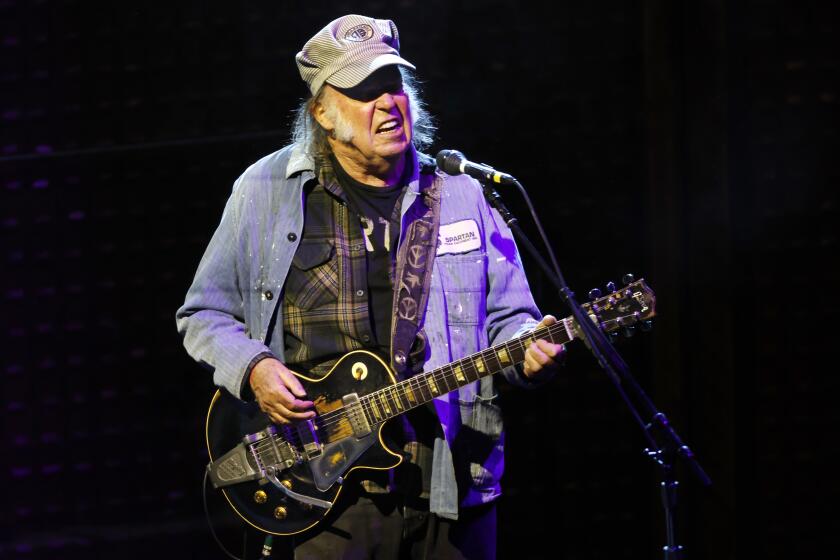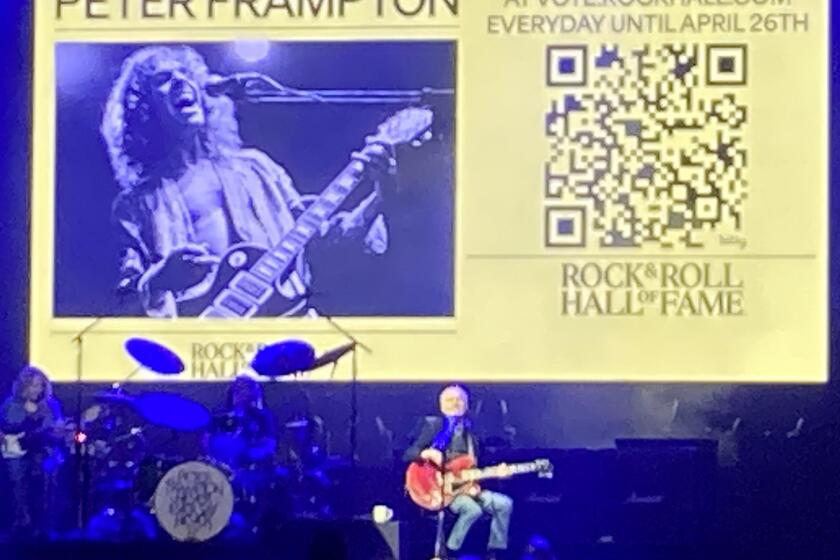Cameron Carpenter: Fantastic virtuosity undermined by questionable taste
When the featured organist at a solo recital steps on stage outfitted in blue crushed velvet tails, platform shoes backed with rhinestones, and sporting a bald undercut Mohawk hairstyle, you know you’re at a Cameron Carpenter concert.
Even before Carpenter made his entrance Sunday evening at the Jacobs Music Center’s Copley Symphony Hall, his identifiers were onstage. Five manuals (i.e., keyboards), stops, and an LED screen carved a futuristic convex shape out of a black console cabinet downstage center, while eight quartets of sleek speakers stood stage right, left and all the way upstage, bathed in blue lights. Cones projected like megaphones from five of the speaker sets.
If George Jetson played organ, his instrument might look like this. It is accurately — if immodestly — called “The International Touring Organ,” an impressive collection of sampled organ sounds from church and theater organs which travels with Carpenter.
There is no better known organist today, nor one so controversial. Fans love Carpenter’s extravagance, his colorful arrangements, and his virtuosity.
Others regard him as the Antichrist of the American Guild of Organists. Playing on an electronic organ instead of real pipes? For shame! Using dozens of organ timbres and heavy rubato to play Bach? Sacrilege! Creating arrangements of piano and orchestral repertoire for the organ? Pshaw, there’s great music composed for the organ which he could champion instead! Playing gooey arrangements of saccharine pop music like Leslie Bricusse’s “Pure Imagination?”
Okay, that last one truly is unjustifiable.
Let’s get back to the organ. If you closed your eyes, it often sounded like an acoustic organ. The amplification was clean and powerful. The speaker placement created an illusion of divisions of pipes spreading across the stage. It is a marvelous instrument.
Carpenter’s technique was astounding. He sometimes played two manuals with one hand, fingers whipping out rapid figurations on top while the thumb sounded a melody on the keyboard below. His pedal work was amazing, displaying a fluidity of tone that contradicted the mad dancing his feet did.
His arrangement of Scriabin’s “Piano Sonata No. 4” found appropriate tone colors to portray Scriabin’s ecstatic melodies and harmonies. In going from orchestra to organ in Carpenter’s version of Wagner’s “Overture to Die Meistersinger,” there was some loss of clarity from the original, but Carpenter maintained Wagner’s bombast and self-conscious humor.
Two Louis Vierne tone poems for organ — “Naiades” and “Carillon de Westminster” (“Westminster Chimes”) — received mysterious and playful renditions respectively.
To my ears, Carpenter’s three improvisations were curious but well-done throwbacks to movie house theater organists, rarely transcending cleverness and virtuosity to make a profound statement.
His Bach performances were either exciting, as in his performances of an unannounced fugue or his own arrangement of a harpsichord Gigue from the “French Suite No. 5;” or ridiculously over the top, as in a gaudy arrangement of the “Prelude” to the “Partita in E Major for Violin.” His version of the “Passacaglia and Fugue in C minor” was infected with over-embellishment of melodies, drastic pushing and pulling of tempos, and a wooden obviousness in performing the repeating theme — Carpenter wanted to be sure you couldn’t miss it, no matter how much Bach disguised it.
Bach’s “Passacaglia” should be profound and stirring, but there was so much of Carpenter in Bach’s way that it became a test of one’s taste for performers imposing their wills on defenseless dead composers. For at least one listener, Carpenter failed.
Hertzog is a freelance writer.
Get U-T Arts & Culture on Thursdays
A San Diego insider’s look at what talented artists are bringing to the stage, screen, galleries and more.
You may occasionally receive promotional content from the San Diego Union-Tribune.





